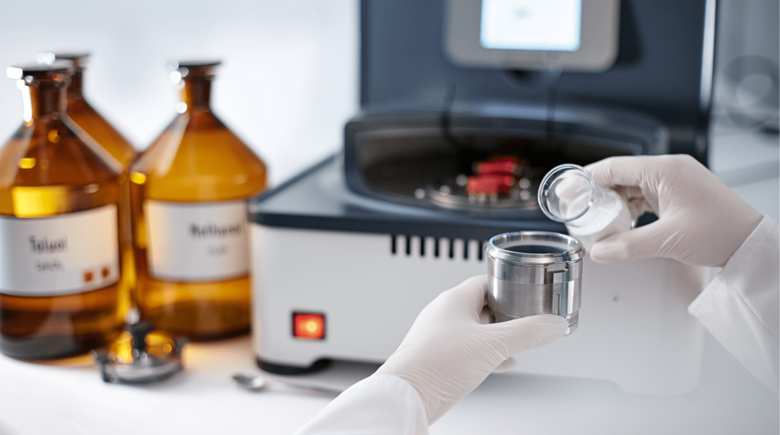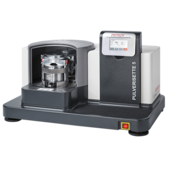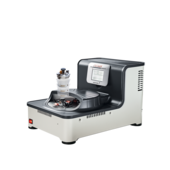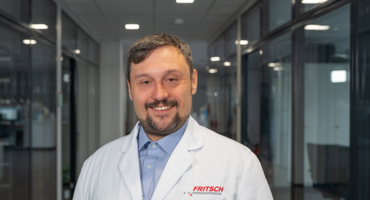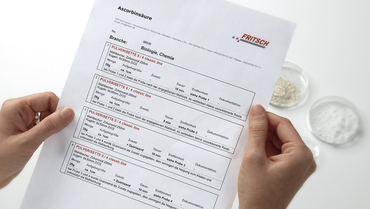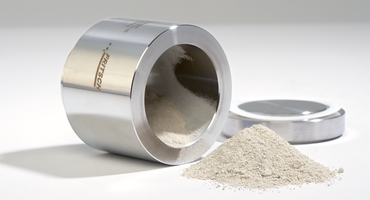Torna alla panoramica
Micromilling of uniform nanoparticles
Fritsch micromills have enhanced one NASA lab’s ability to develop optimized ceramic nanoparticulate materials for demanding research projects, including energy storage and thermoelectric device applications. (by Curtis W. Hill and Lee Allen, NASA Marshall Space Flight Center)
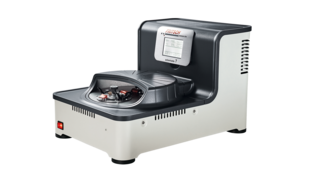
Our laboratory at NASA Marshall Space Flight Center (Huntsville, Ala.) develops materials and processes for NASA’s exploration missions and the International Space Station. This involves developing and optimizing materials properties for very demanding applications in energy storage, power generation, and other advanced application areas.
The challenge of developing new materials and processes demands laboratory equipment with advanced capabilities. For instance, the ability to produce uniform nanoparticles is critical for our development of advanced ultracapacitors for energy storage, thermoelectric devices with high figure-of-merit, and materials for NASA’s Nuclear Thermal Propulsion system. However, ceramic powder as-received from suppliers typically has a fairly wide range of particle sizes and is not consistent enough for our high-performance materials research. We have investigated and tested various milling machines and processes, including ball mills and vibratory mills. Although these techniques help reduce D50 particle size as well as improve particle size distribution, the resulting powders are still of insufficient quality for our demanding research.
We have been working with Fritsch’s Pulversette line of micromills for the past couple of years to develop much smaller and more uniform particles, as these micromills are capable of ultrafine grinding results down into the nanometer particle size range (Figure 1). The laboratorysize mills use smaller, very hard media to achieve extraordinary milling energy.
We use stainless-steel milling bowls lined with zirconia, although mills are available in several other materials and capacities depending upon the materials to be milled. The micromill uses rotation speeds of up to 1,100 rpm and an acceleration force of 95 g for a resulting energy application roughly 150% greater than that of classic planetary mills. This extraordinary milling energy results in more economical and efficient milling of particles, providing us with considerably finer grinding results in shorter times. Although grinding media is available in different sizes and materials, we use hardened ZrO2 media with diameters of 0.5–2.0 mm. We have reduced milling times by an order of magnitude, and the resulting powders are much higher quality in terms of reduced particle sizes and improved particle size distribution. These high-quality ceramic powders have enabled several trajectories of research applications, a couple of which are highlighted below.
Ultracapacitor research
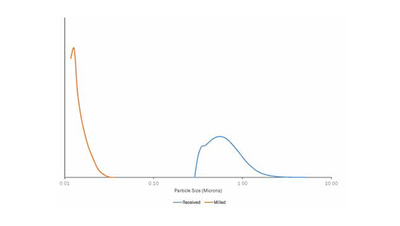
nanopowders.
Our ultracapacitor development has focused on optimizing dielectric properties of perovskite ceramic powders for ultrahigh permittivity, low dielectric loss, and high dielectric breakdown. The resultant materials can be used as solid-state energy storage devices to replace electrochemical batteries, and they can be used as very high-voltage triggers for propulsion systems. We have been developing processes to increase grain boundary characteristics of these materials to store charge and to significantly increase sintered density of the devices. The ability to micromill ceramic particles into low nanometer particle sizes, with corresponding improvement of D10 to D90 particle size distribution and particle distribution curve (Figure 2), has allowed us to optimize these processes, resulting in ultracapacitor devices with good sintered density resulting from the uniform particle size (Figure 3).
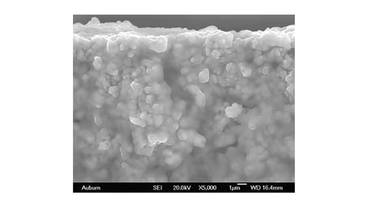
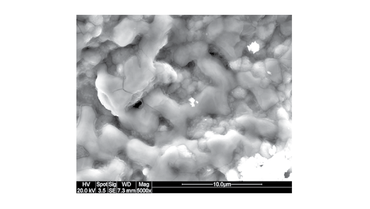
Thermoelectric research
We also develop thermoelectric materials that can be used for power generation subsystems on long-range missions and habitats. This research involves optimizing sintering of various doped ceramic nanopowders to increase electrical conductivity and reduce thermal conductivity. Our ability to micromill powders with <50 nm particle sizes has enhanced these research efforts in allowing us to investigate the effect of substantially increased grain boundary surface area, and the effects of the various materials and dopant modifiers at these extremely small particle sizes. Figure 4 shows the microstructure of a sintered doped ZnO thermoelectric device.
-
Download the FRITSCH-report as PDF file
Micromilling of uniform nanoparticles for space applications
-
Detailed grinding reports
-
Sources and continuative literature
Published in the American Ceramic Society Bulletin, Vol. 97, No. 2 | www.ceramics.org
About the authors:
Curtis W. Hill is senior materials engineer with NASA Marshall Space Flight Center’s Engineering and Science Services and Skills Augmentation (ESSSA).
Contact Hill at curtis.w.hill@ nasa.gov.Lee Allen is materials engineer with NASA Marshall Space Flight Center.
Contact Allen at lee.r.allen@ nasa.gov.Marshall Space Flight Center is located on Redstone Arsenal in Huntsville, Ala.
Torna alla panoramica

